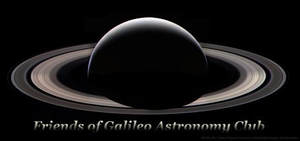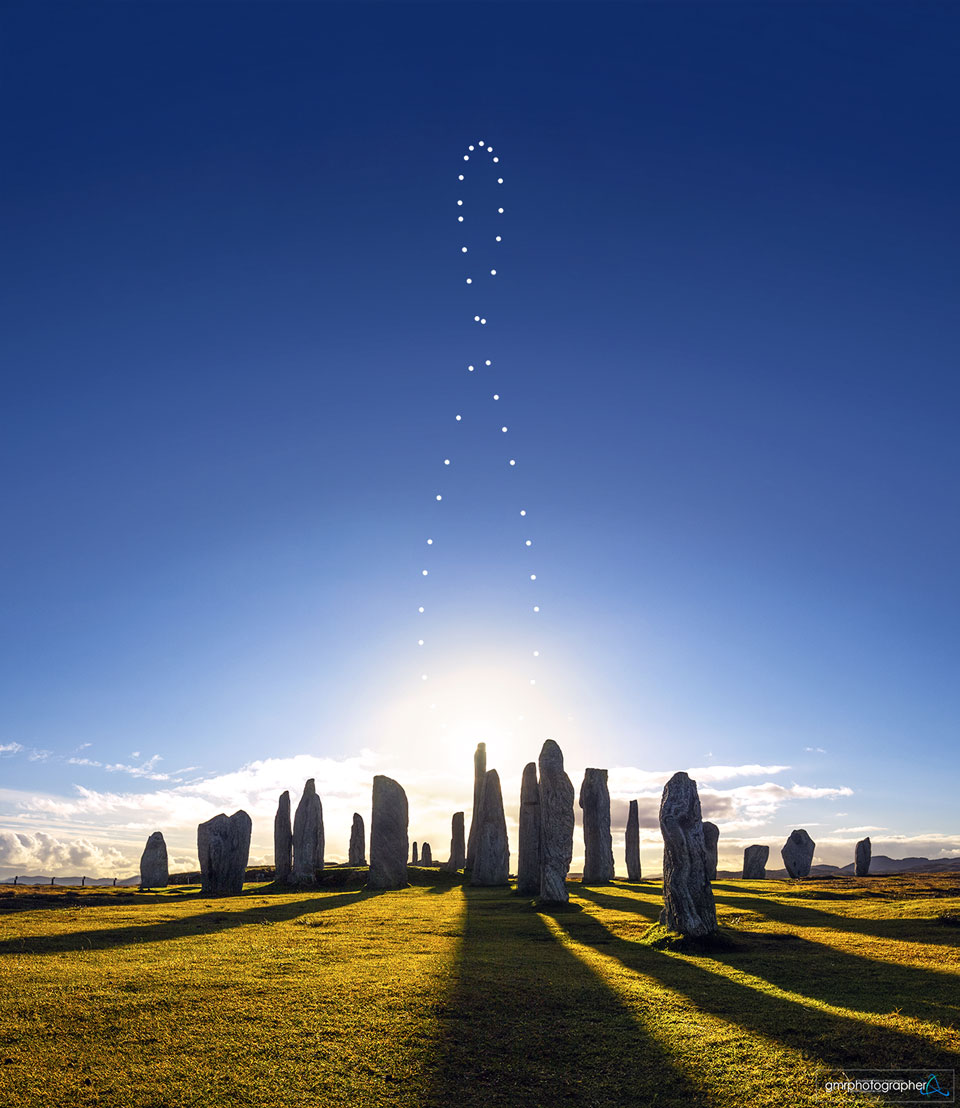FOG Blog
|
Sky Report by Ted Gruber
Evening Sky Venus (magnitude -3.9) and Saturn (0.8) become visible in the southwest at dusk. Brighter Venus currently sets a bit after 6:30pm, with Saturn following about 30 minutes later. Venus passes about 0.4° south of Saturn the evening of January 22, close enough to fit together in a telescope’s field of view. The planetary pair will become visible around 5:30pm, 13° above the southwest horizon as dusk fades to darkness, with the one-day old new moon positioned about 4° south of the two planets. By the end of January, Saturn will become lost in the twilight. Venus passes less than 1° south of Neptune (magnitude 8.0) the evening of February 15, close enough to fit together in a telescope’s field of view. Binoculars or a telescope are required to see the conjunction. Venus sets just before 8:00pm that evening. Jupiter (magnitude -2.3) becomes visible about 40° above the southwest horizon as the sky darkens. It currently sets about 10:30pm and about 9:15pm by mid-February. The moon passes about 2° south of Jupiter the evening of January 25. Mars (magnitude -0.6) becomes visible high in the eastern sky as darkness falls. The red planet currently sets in the west-northwest about 4:30am and about an hour earlier by mid-February. The moon passes about 0.1° south of Mars the evening of January 30, close enough to fit together in a telescope’s field of view. Morning Sky Mercury (magnitude 0.4) currently rises in the southeast about 6:15am, about 90 minutes before sunrise. The innermost planet brightens to magnitude -0.2 and rises about 15 minutes later by mid-February, but by then only about 45 minutes before sunrise. Moon Phases New (1/21), first (1/28), full (2/5), last (2/13), new (2/20), first (2/27).
0 Comments
Click the link below to view or download this month's newsletter.
Sky Report by Ted Gruber
Evening Sky Saturn (magnitude 0.7) and Jupiter (-2.7) become visible in the southeast as the sky darkens. Saturn sets first, a little past 10:30pm, followed by Jupiter just before 2:30am. By mid-December, both planets become visible in the south after sunset, with Saturn setting about 9:00pm and Jupiter about 12:30am. The moon passes about 4° south of Saturn the evening of November 28 and about 2.5° south of Jupiter the night of December 1. Mars (magnitude -1.6) currently rises in the east-northeast just past 6:00pm and remains visible overnight. By mid-December the red planet will have already risen in the east-northeast as darkness falls. The full moon occults Mars the evening of December 7. From Longview, Mars disappears behind the moon at 6:49pm and reappears on the opposite side at 7:48pm. Mars reaches opposition the next evening, shining at magnitude -1.9. Venus (magnitude -3.9) and Mercury (-0.6) return to the evening sky in early December. Both planets will be low in the southwest at twilight, setting about 45 minutes after sunset, but will offer better viewing later in December. Morning Sky Mars appears in the west until fading into fading into the morning sunlight. By mid-December, Mars sets in the west-northwest about 20 minutes before sunrise. Meteor Showers The Leonids meteor shower is active from November 3 to December 2, peaking the night of November 17-18, typically producing 10-15 meteors per hour at the peak. The moon rises just before 1:00am and about 32% illuminated the morning of November 18, making fainter meteors invisible. Some predictions call for an off-peak outburst ranging from 50 to 250 meteors per hour between 10:00pm and 10:30pm local time on November 18, but these will not be visible from the western US. The Geminids meteor shower is active from December 4 to 17, peaking the night of December 13-14. This shower can produce rates of 150 meteors per hour during the early morning peak, but also offers strong activity from 10:00pm until midnight on the 13th. The moon will be about 70% illuminated the night of the peak, making fainter meteors invisible. Moon Phases Last (11/16), new (11/23), first (11/30), full (12/8), last (12/16), new (12/23), first (12/30). Click the link below to view or download this month's newsletter.
Click the link below to view or download this month's newsletter.
Sky Report by Ted Gruber
Evening Sky Saturn (magnitude 0.4) becomes visible in the southeast sky as darkness falls and dims slightly to magnitude 0.6 over the next month. Jupiter (magnitude -2.9) now rises in the east just before 7:30pm. By mid-October the bright planet rises before sunset, becoming visible in the eastern twilight. Mars (magnitude -0.4) currently rises in the east-northeast just before 10:30pm. The red planet rises about an hour earlier and brightens to magnitude -0.9 by mid-October. The moon passes about 4° south of Saturn the night of October 5-6 and about 2° south of Jupiter three nights later. On the night of October 14-15, the moon passes less than 4° north of Mars. The moon occults Uranus (magnitude 5.7) the night of October 11-12. From our area, Uranus disappears behind the illuminated side of the moon at 10:03pm and reappears from the unilluminated side at 11:05pm. The moon is 94% illuminated that night. Morning Sky Saturn, Jupiter, and Mars rise in the evening but remain visible into the early morning hours. Saturn currently sets in the west-southwest about 3:30am, with Jupiter setting in the west about 30 minutes before sunrise. By mid-October, Saturn sets just before 2:00am and Jupiter just past 5:30am. Mars remains visible until fading into the morning sunlight. Venus (magnitude -3.9) currently rises in the east about 45 minutes before sunrise, and about 30 minutes before sunrise by early October. Mercury returns to the morning sky in early October. On October 1, Mercury rises in the east a little more than an hour before sunrise but shines at a rather faint magnitude 1.2. Over the next two weeks, Mercury rises about the same time, but sunrise is earlier. The innermost planet brightens each morning, reaching magnitude -0.9 on October 15. Orionids Meteor Shower The Orionids meteor shower is active from September 26 to November 22, peaking the night of October 20-21, typically producing 10-20 meteors per hour at the peak. The moon is favorable at the peak this year, rising just after 3:00am and about 17% illuminated the morning of October 21. The shower is called the Orionids because the meteors appear to emanate from a point in the constellation Orion, but they can be seen across the night sky. The Orionids are one of two annual showers resulting from the Earth passing through the debris trail left by Halley’s comet (the Eta Aquriids in May are the other). Moon Phases New (9/25), first (10/3), full (10/9), last (10/17), new (10/25) Our day and night are of equal length today, as we find our selves between the longest and shortest days of the year.
The solstices and the equinoxes have been vital astronomical events for millennia, in cultures around the world. Here in Longview, the fall equinox marks the start to planning our Solstice Lantern Walk in December. We're getting ready for our fourth one already! Check out the event. Or volunteer. Or sponsor a planet. Bring some light and cheer to the longest night of the year! Click the link below to view or download this month's newsletter.
Sky Report by Ted Gruber
Evening Sky Mercury (magnitude 0.1) is visible very low above the western horizon just after sunset through the end of August, slightly dimming and appearing a bit farther south with each passing evening. The moon appears about 6° east of Mercury just before sunset on August 29. Saturn (magnitude 0.3) currently rises about 8:00pm and becomes visible in the southeast sky as darkness falls. The ringed planet rises about four minutes sooner each night over the next month. Jupiter (magnitude -2.8) now rises in the east about 9:45pm, and about 7:30pm by mid-September. The moon passes about 4° south of Saturn the night of September 7-8 and less than 2° south of Jupiter three nights later. Mars (magnitude 0.0) returns to the evening sky this month, rising in the east-northeast just before midnight. The red planet brightens to magnitude -0.3 and rises about an hour earlier by mid-September. Morning Sky Venus (magnitude -3.9) currently rises in the east-northeast just past 4:30am. By mid-September, the bright planet rises in the east about 90 minutes later, but less than an hour before sunrise. Saturn, Jupiter, and Mars rise in the evening but remain visible into the overnight hours. Saturn currently sets in the west-southwest about 6:00am and about two hours earlier by mid-September. Jupiter and Mars remain visible until fading into the morning sunlight. The moon passes about 3° north of Mars in the early morning hours of August 19, and does so again the night of September 16-17. The moon appears about 4° west of Venus just before sunrise on August 25. Perseids Meteor Shower The Perseids meteor shower peaked the night of August 11-12 but remains active until August 24. The shower is called the Perseids because the meteors appear to emanate from a point in the constellation Perseus in the northeast sky. Moon Phases Last (8/18), new (8/27), first (9/3), full (9/10), last (9/17), new (9/25) Click the link below to view or download this month's newsletter.
|
Friends of Galileo
We are astronomy enthusiasts who love to learn and to share our wonder at the amazing sights right overhead. Archives
February 2024
Categories
All
|
||||||||||||||||||||||||||||||


 RSS Feed
RSS Feed